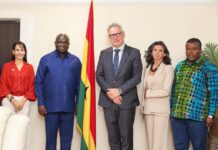In a groundbreaking revelation, the world now has an assessment of the consequences of disasters on a global scale: Over the past three decades, the agricultural sector has incurred losses amounting to approximately $3.8 trillion (equivalent to around €3.6 trillion).
According to a report released by the Food and Agriculture Organization (FAO), nearly half of these costs can be attributed to droughts, while floods, storms, pests, health crises, and conflicts are also significantly contributing to this growing impact.
“Disasters are producing unprecedented levels of damage and loss in agriculture around the world. Their increasing severity and frequency, from 100 per year in the 1970s to around 400 events per year in the past 20 years, affect agrofood systems across multiple dimensions, compromising food security and undermine the sustainability of the agriculture sector,” Maximo Torero, Chief Economist, FAO.
Asia is the hardest-hit region, but on a global scale, average annual losses amount to 116 billion euros, equivalent to 5% of annual agricultural gross domestic product, almost equal to losses
experienced in Africa, Europe and the Americas put together.
Nevertheless, compared to the estimated counterfactual production, losses appear to be particularly significant in several parts of Africa, primarily Eastern, Northern and Western Africa
The continent also gets the short end of the stick when it comes to climate related hazards, with a registered 70 percent of all global wildland fires.
The Food and Agriculture Organization of the United Nations (FAO) notes a significant increase in the number of disasters, from around a hundred a year in the 1970s to around 400 in recent times. With climate change on the horizon, these impacts are expected to intensify, further exacerbating existing social and environmental vulnerabilities.








